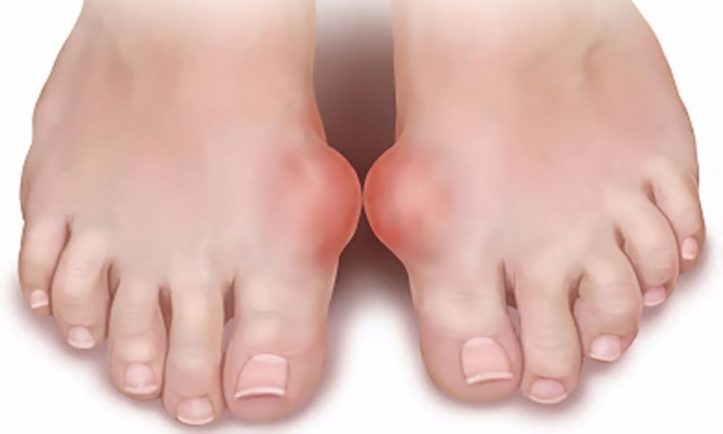Gout is an extremely painful form of arthritis, which causes extreme swelling and pain in the joints, tendons, or even the tissues surrounding the joints, often for weeks at a time. With early diagnosis, effective treatment, and minor lifestyle changes, gout can be one of the more controllable varieties of arthritis.
However, if left untreated, it can progress into a more serious state, with the joints becoming severely inflamed, and later, affected by infection. If you have gout, there are some things you can do to reduce its severity and help it return to a more manageable level.

Gout is often referred to as the worst nightmare of the medical world. It can be very painful, cause extreme swelling, throbbing pain, tenderness, redness, burning sensation, and damage to the joint. Unlike arthritis, gout cannot be prevented, but there are many ways to treat and manage it. Most patients simply take medications prescribed by their doctors to deal with the symptoms, like the anti-inflammatory and pain relievers, as well as the diuretics and blockers used to reduce uric acid levels. Unfortunately, these traditional approaches are not always effective, as most people simply do not get the desired relief with these drugs.
In order to avoid the complications and discomfort caused by this condition, patients are encouraged to adopt a range of lifestyle and medical treatment options. These options are sometimes inconvenient or costly, but when adopted correctly, can offer permanent relief from gout pain. Patients are encouraged to learn and implement a number of self-help and self-treatment strategies as well, including diet modifications, weight management, physical exercise, vitamin, and mineral supplement intake, relaxation techniques, stress reduction techniques, among others. While it is not necessary to pursue a medical treatment regime to overcome or prevent gout, these additional methods can greatly enhance the chances for positive results. With time, self-managed gout pain sufferers may eventually find that they can effectively and permanently eliminate this painful condition without the need for medical treatment.
One of the main risk factors for developing gout is high blood pressure or hypertension. Because gout can exacerbate existing high blood pressure conditions, the first step is to properly maintain current blood pressure. Patients should avoid alcohol intake, especially excessive alcohol consumption, for the best chance at avoiding the development of gout. Excessive alcohol intake increases the risk of dehydration, which further aggravates the symptoms of gout. While it is not necessary to completely abstain from alcohol, patients should limit its consumption to no more than one to two drinks per day, or as indicated on the appropriate drinking recommendations for the patient.
Gout is also commonly accompanied by a series of intense pain and discomfort in the affected joints, tendons, and other tissues. These symptoms are often mistaken for other health related issues, such as arthritis or tendonitis. The fact is, these symptoms occur just as sharply in those who have gout as they do in those who do not, as they both represent a serious threat to the overall health of the patient. The duration and intensity of the symptoms experienced during an attack may vary, with some attacks only lasting a few hours while others may last up to a couple of weeks.
When experiencing gout symptoms, the first step is to stop all unnecessary activity immediately. This will ensure that no further damage is done to the affected joints or other tissues. When resting, the patient should avoid moving at all but the most urgent of tasks. This is to reduce the risk of damaging any additional joints that were damaged during the attack. In addition, the patient should seek the services of a doctor immediately to assist them with any symptoms of loss of motion or excessive pain associated with urination or swelling of the joints and surrounding areas.
If you have been diagnosed with gout, the key is to avoid further damage to the joints by controlling the progression of the disease. The symptoms themselves are very manageable if treated early on, especially in the early stages when the affected joints are still healing and soft tissue is not completely destroyed. It can be difficult to diagnose gout due to the irregularity of its symptoms, which may include swelling or redness of the affected joint or the appearance of tiny crystal deposits along the edges of the joints.
These crystals are formed as a result of the uric acid produced within the kidneys, which then convert to uric acid crystals when they come into contact with certain foods that are rich in purines. It is often difficult to identify the specific foods that are prone to causing these attacks as most people consume such a wide variety of foods in their daily lives. However, those that are particularly high in purine levels, including meats, seafood, poultry, and organs such as liver and kidney, are thought to be the cause of many cases of gout.